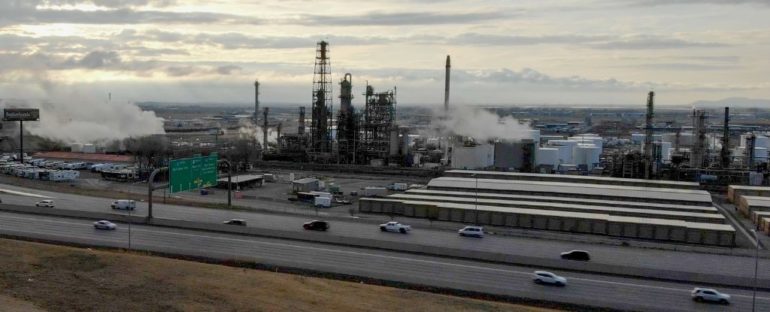Residents who live downwind of fracking wells are likely being exposed to radioactive airborne particles, according to a new statistical analysis of public data.
While the levels measured in this case are not extremely dangerous, if inhaled on a regular basis, scientists worry they may cause adverse health outcomes, like lung cancer, in nearby areas.
Once these radioactive particles are in a person’s body, they can continue releasing ionising radiation, possibly inducing oxidative stress and inflammation, even at the low levels observed.
Fracking is known to produce radioactive waste, usually from briny water welling up to the surface and bringing isotopes or uranium and radium up from below.
But the potential health effects of these particles are unclear and the current literature is limited. Despite many reasons to worry – including links to high-risk pregnancies, adverse birth outcomes, migraines, chronic rhinosinusitis, and severe fatigue – radioactive drilling waste from fracking is “virtually unregulated” in the United States, and both presidential candidates support the practice.
“If you asked me to go and live downwind [of fracking sites], I would not go,” public health scientist Petros Koutrakis from Harvard University told The Guardian.
“People should not go crazy, but I think it’s a significant risk that needs to be addressed.”
Gathering over 320,000 measurements of particle radioactivity in the air from across the United States, the analysis found communities between 20 and 50 kilometres downwind of operational fracking sites experienced worse radioactive pollution. The closer these communities got to the wells, the greater the levels of radioactivity.
“With adjustment for environmental factors regarding the natural emission and movement of particle radioactivity, an additional 100 upwind [fracking] wells within 20 kilometres was associated with a 0.024 mBq/m3 increase in the level of particle radioactivity,” the team writes in the study.
Such radiation levels translate to roughly 7 percent above the nationwide background levels of 0.35 mBq/m3.
But the most affected place in the country appears to be Fort Worth, Texas, which had nearly 600 wells 20 kilometres upwind in 2017. Based on the team’s calculations, this could result in a 40 percent increase of radiation levels above normal.
The association is too great to ignore, and while more research needs to dig into possible causes, the authors suspect several factors, including accidental spills and the sneaky release of natural gas, as well as the management, storage, and disposal of radioactive waste water, mud, and radioactive drill cuttings.
Another recent review of the potential risks faced from fracking found radioactive pollutants might even be present in natural gas pumped into people’s houses if it’s not stored away for long enough.
That sounds really scary, but the authors say with appropriate regulation of “exploratory drilling, gas capture and the use and storage of fracking fluid” the risk to the environment and public health can be minimised.
While some states in the US and other countries around the world have banned fracking until further research is done, the current analysis suggests there are still many communities in the United States where invisible pollutants in the air are putting people’s health at risk.
“Our hope is that once we understand the source more clearly, there will be engineering methods to control this,” Koutrakis told Reuters.
Of course, stopping the drilling is another option, too.
The study was published in Nature Communications.



